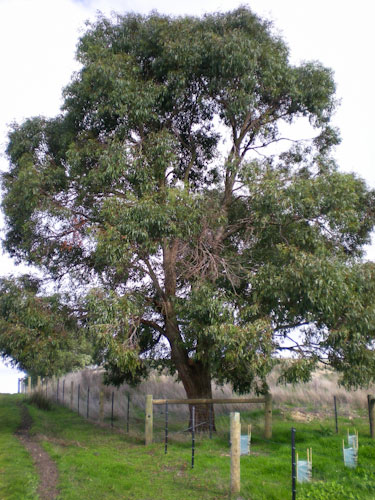
Scentbark
|
Back to Factsheets | Download PDF |
Native trees and shrubs for farms and rural properties
Just some of their uses
1. Windbreaks-
A good windbreak will have short, medium and tall trees.
Short and medium shrubs and trees will filter the wind close to the ground and halt tunneling.
Tall trees (taller the better) will lift the wind up and over the area you are trying to protect to at least a distance of twenty times the height of the trees.
2. Shelter-
Farm animals use up energy when stressed by hot and cold weather. Appropriate shelterbelts strategically planted around properties will help stock cope with extremes.
3. Erosion control-
Subsoils in the region are very susceptible to erosion which shows itself in tunnel erosion, landslips and creek bank slumping.
Native trees and shrubs planted in eroded areas use up excess water and hold fragile soil.
Plants with fibrous root systems and/or have the ability to sucker are important in controlling erosion.
Removing stock from eroded areas is vital as well.
4. Water quality-
Remove stock from waterways and provide troughs.
Remove willows from waterways.
Plant indigenous species that hug the banks and local sedges, rushes and shrubs to hold the silty creekbed.
5. Salinity control-
Salty groundwater comes to the surface when land is cleared especially in low lying areas. Plants that can tolerate these salty and wet discharge areas need to be planted to keep the groundwater level down.
Indigenous species can be planted further uphill in recharge areas to utilise the less salty groundwater before it heads downhill.
|











